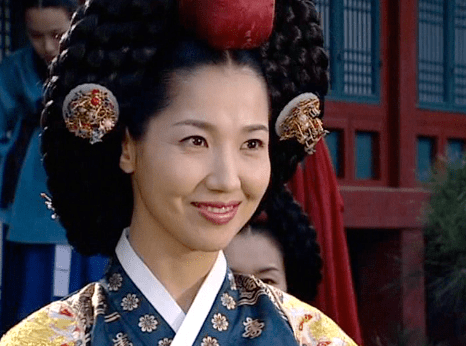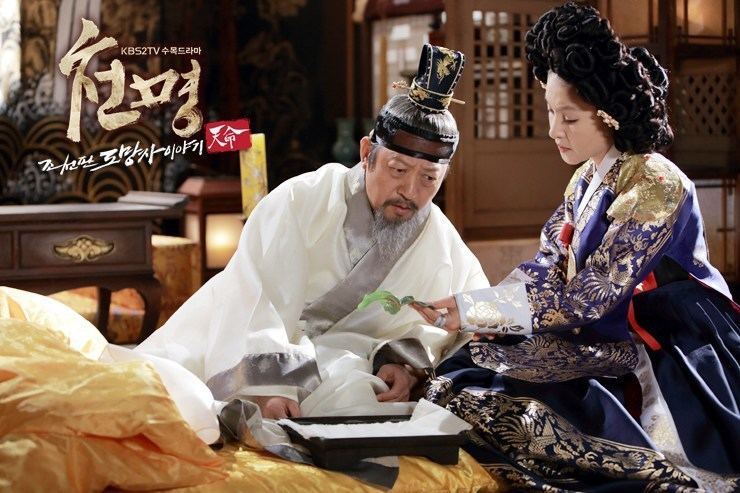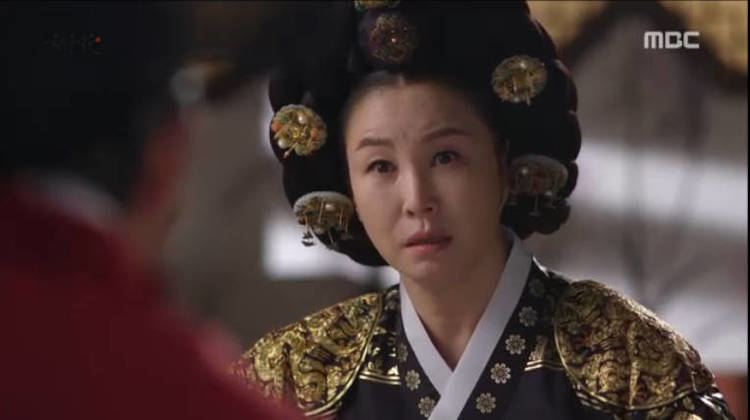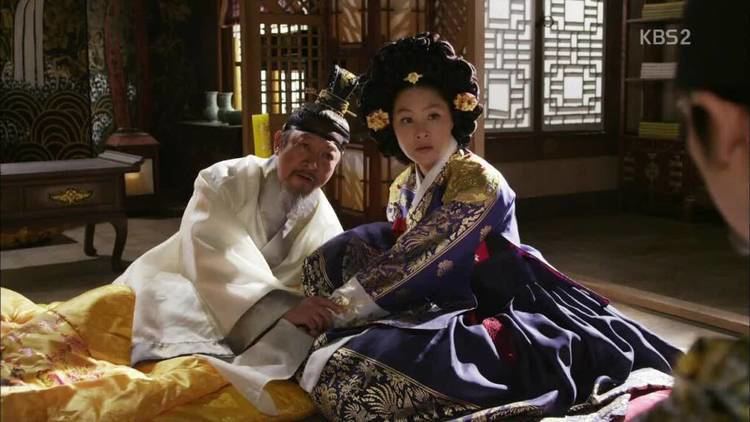Father Yoon Ji-im Successor Myeongjong of Joseon Spouse Jungjong of Joseon | Name Queen Munjeong Mother Lady Lee Children Myeongjong of Joseon | |
 | ||
Regency 7 July 1545 – 7 April 1565 Predecessor Injong (as reigning King) Issue Myeongjong of Joseon
Princess Uihye
Princess Hyosun
Princess Gyeonghyeon
Princess Insun Died December 29, 1565, Changdeokgung, Seoul, South Korea Place of burial Royal Tombs of the Joseon Dynasty Similar People Myeongjong of Joseon, Jungjong of Joseon, Deposed Queen Lady Yun, Cheoljong of Joseon, Sunjo of Joseon | ||
Seal of queen munjeong to return to korea next month
Queen Munjeong or Queen Moon-Jung (Hangul: 문정왕후, Hanja: 文定王后) (2 December 1501 – 5 May 1565), also known as Queen Dowager Seongryeol (성렬왕대비), was a Queen consort of Korea by marriage to King Jungjong of Joseon, and Regent of Korea from 1545 until 1565.
Contents
- Seal of queen munjeong to return to korea next month
- Rise to Power
- Revival of Buddhism
- Buddhist Paintings
- Buddhist temples
- Family
- Popular culture
- References

She was of the Papyeong Yun clan. She was regent for her son King Myeongjong when he was still too young to rule by himself until 1565. Known as a good administrator, she continued to rule even after he reached the age of majority. She gave out the land to common people who had been formerly owned by the nobility. It was only after her death that her son took over power.

She was given the posthumous title Seongryeol Inmyeong Munjong Wanghu (성렬인명문정왕후, 聖烈仁明文定王后).

Rise to Power

According to unofficial chronicles, there is a tale of Munjeong finally showing love for her "adoptive" son King Injong, after decades of polite indifference (in reality behind-the-scenes hatred).

As Injong went to pay his morning respects, Munjeong’s face started radiating with a smile only a mother could give to her child. Injong took it as a sign that the Queen Mother was finally acknowledging him as the king, and in particular as her own son. He ate the ddeok that his step-mother gave him, not knowing that it would be the beginning of the end. He fell ill slowly, not enough to create any suspicion, but quickly enough that historians would later pick up on the event. Three days passed before Injong mysteriously died (after only 9 months of rule).
Queen Munjong’s son became King Myeongjong, while Munjeong became Queen Regent. The chronicles also tell that Munjeong was frequently visited by spirits at night after Injong’s death. So disturbed was she that she moved her residence from Gyeongbok Palace to Changdeok Palace.
Revival of Buddhism
Munjeong was the most influential supporter of Buddhism during the early dynasty; indeed, she lifted the official ban on Buddhist worship and instigated an impressive revival of Buddhism.
Two proofs of her strong support of Buddhism still exist.
Buddhist Paintings
During the time her son (the Royal Prince) fell ill, and at the same time her failure to produce another son, her concerns motivated her to order 400 Buddhist artworks (50 of which are in supplication for the recovery of the Royal Prince and the birth of another son). Also, the aim of the commission was to commemorate the opening of Hoeam Temple. The project was started in 1563 and was completed 2 years later. Unfortunately, the Royal Prince died before the commission's completion.
The massive commission involved 100 scrolls on each of 4 triads:
In each set of 100, 50 were executed in colors and gold, the other 50 in gold only.
As of 2009, only 6 of the commissioned 400 are still extant.
Buddhist temples
Buddhist temples served as another proof of Munjeong's zealous aim of the revival of Buddhism. The cornerstone of the revival of Buddhism is the Bongeun-sa Temple (a major center of Zen Buddhism).
Bongeun-sa was established in 794 by Ven. Yeon-hoe, and was originally called Gyeonseong-sa. It was rebuilt in 1498 (by Munjeong's patronage) and renamed Bongeun-sa; in 1562 it was moved about 1 km to its current location and rebuilt. Its fate will be destruction by fire (1592 and 1637) and repetitive rebuilding and renovations (1637, 1692, 1912, 1941, and 1981). A three-story stone stupa enshrines the Sari of Sakyamuni Buddha, brought from Sri Lanka in 1975.
The temple fell into decline during the late Goryeo era, but was reconstructed in 1498. Before the reconstruction, Buddhism fell under severe state-imposed oppression as the government maintained Neo-Confucianism as the sole state ideal. With Munjeong's strong support for the re-awakening of Buddhism, she reconstructed Bongeun-sa and it was to become a cornerstone for early-Joseon Buddhist revival.
Ven. Bo-woo played a key role at this critical period, having been assigned as the Chief Monk of Bongeun-sa in 1548. He revived an official system of training and selecting monks in both the Seon (meditation) and Gyo (doctrinal, scholastic) sects of Korean Buddhism. In 1551, Bongeun-sa became the main temple of the Jogye Seon Order, then soon became the main base for the overall restoration of Korean Buddhism. This revived training system produced such illustrious monks as Ven. Seo-san, Ven. Sa-myeong, and Ven. Byeok-am. However, after Munjeong died, Ven. Bo-woo was killed by anti-Buddhist officials.
Family
- Yun Won-Gae (윤원개)
- Yun Won-Ryang (1495 – 1569)(윤원량)
- Sister-in-law: Lady Jang (장씨)
- Yun Won-Pil (1496 – 1547) (윤원필)
- Yun Won-Ro (? – 1547) (윤원로)
- Yun Won-Hyeong (1509 – 18 November 1565) (윤원형)
- Sister-in-law: Lady Kim of the Yeonan Kim clan (연안 김씨)
- Sister-in-law: Jeong Nan-Jeong (? – 13 November 1565) (정난정)
- King Myeongjong of Joseon (3 July 1534 – 3 August 1567) (이환 경원대군)
- Princess Uihye (1521 – 1564) (의혜공주)
- Princess Hyosun (1522 – 1538) (효순공주)
- Princess Gyeonghyeon (1530 – 1584) (경현공주)
- Princess Insun (1542 – 1545) (인순공주)
